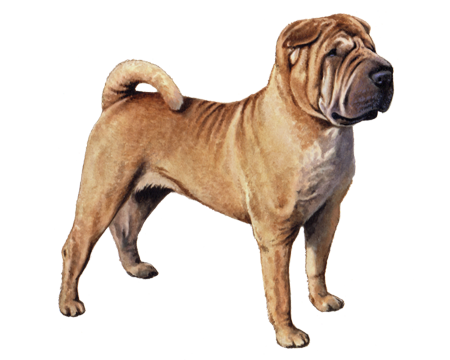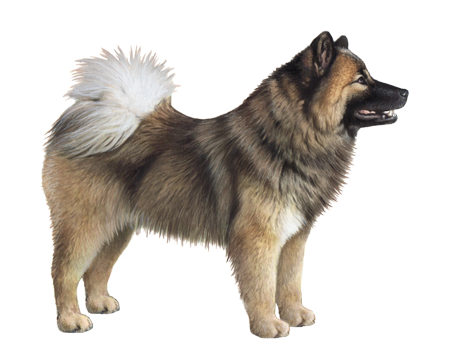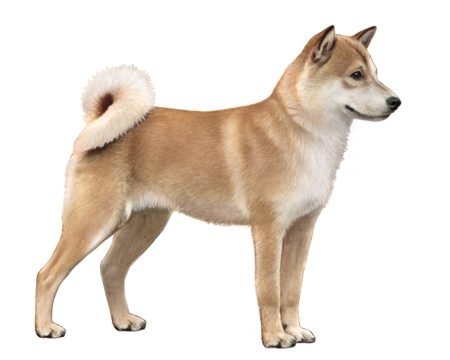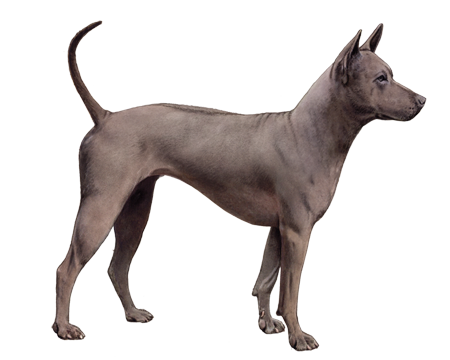
Canadian Eskimo Dog
One of just five breeds indigenous to Canada, the Canadian Eskimo Dog is known for its strength, endurance, and ability to withstand frigid temperatures. Though it was once on the brink of extinction, this iconic Arctic breed survived thanks to efforts to save its populations.
Interested in discovering if your dog is a Canadian Eskimo Dog?
Check out Wisdom Panel's DNA tests.

Canadian Eskimo Dog Traits
General Appearance
Like other Arctic dogs, the Canadian Eskimo Dog has long, thick fur and a dense undercoat to protect from extreme winter conditions. The breed also has a powerful, medium-sized build.
Coat and Coloring
Canadian Eskimo Dogs come in many colors—including white, red, buff, cinnamon, grey, black, and sable. Their fur grows up to six inches in length and comes in a range of patterns.
Distinctive Physical Traits
Canadian Eskimo Dogs have unique face masks and a wolf-like appearance. And males have longer hair around their neck and shoulders, resembling a mane.
Canadian Eskimo Dog Temperament
Despite their cute and cuddly appearance, Canadian Eskimo Dogs are not well-suited for domestic life. As working dogs bred to perform arduous tasks in harsh environments, they're happiest when given a task. That said, Canadian Eskimo Dogs can be relaxed, affectionate, and friendly once exercised.
A pack-oriented breed that often over-responds to stimuli like food and toys, the Canadian Eskimo Dog isn't great for families with children. And because of their hunting dog background, Canadian Eskimo Dogs have strong predatory instincts that make them less compatible with other pets. In multi-dog households, strong leadership and a well-established pack order are essential.
Canadian Eskimo Dogs have a tendency to guard resources such as food and toys. So, you must set firm rules early on and socialize your puppy to prevent undesirable behaviors. Canadian Eskimo Dogs can also be vocal. They howl instead of barking, making them less than ideal for apartment living.
This breed's Arctic roots run deep. Canadian Eskimo Dogs love sub-zero temperatures and don't adapt well to living in temperate climates.
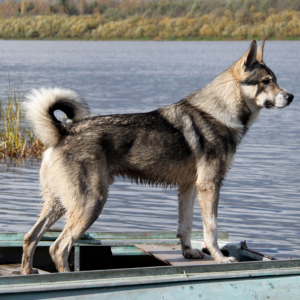

Canadian Eskimo Dog History
Not to be confused with the petite American Eskimo Dog, the Canadian Eskimo Dog has had several names—including Qimmiq, Exquimaux Husky, and Esquimaux Dog. The Inuit people used Canadian Eskimo Dogs to hunt polar bears and find seal blow holes in the ice.
The Thule people of Greenland and Arctic Canada kept Canadian Eskimo Dogs as pets and working dogs for more than 1,000 years. And in the 19th and 20th centuries, Arctic and Antarctic explorers chose these iconic dogs as companions for their intelligence, strength, and endurance.
Canadian Eskimo Dogs were once so popular that their number was estimated at more than 20,000. But by 1970, the breed had almost disappeared. This sharp population decrease caused the American Kennel Club to drop the breed from its registries. In response, a multi-stakeholder group—which included the Canadian Kennel Club—formed the Canadian Eskimo Dog Research Foundation in Canada's Northwest Territories to help restore the breed.
The Canadian Eskimo Dog has been recognized as one of Canada's oldest breeds and become an icon of Canadian culture. The breed was featured on a postage stamp and the 50-cent piece. And it was chosen as the animal symbol of the Nunavut territory in Canada.
Canadian Eskimo Dog Care
Nutrition
Canadian Eskimo Dogs are a high-energy breed and require a quality dog food that is age-appropriate—whether commercially manufactured or homemade (with a veterinarian's supervision and approval). Historically, they've enjoyed a diet consisting of walrus, seal, caribou, and fish.
This breed is known to work hard with very little nourishment. So, Canadian Eskimo Dogs usually don't overeat. Still, it's important to monitor the amount of food you give your dog and reduce portions or restrict calories if they gain excess weight. Also, remember that giving too many treats in addition to regular meals can contribute to obesity.
Grooming
In general, weekly brushing will help keep your Canadian Eskimo Dog's thick coat looking good. But this breed requires additional grooming during the late summer to promote shedding of the dense undercoat. A coat rake helps with this, as well as matted fur (which can lead to skin problems).
Like all dogs, Canadian Eskimo Dogs also require regular nail trims, ear cleanings, and dental care, including at-home teeth brushing and annual professional dental cleanings.
Exercise
Canadian Eskimo Dogs were bred to haul large loads across long distances, often covering up to 40 miles per day. So, it should come as no surprise that they require regular physical activity. And a walk around the block isn't enough. This breed needs lots of outdoor exercise with room to romp.
And even if they get it, Canadian Eskimo Dogs may look for opportunities to escape and run free. So, a tall, partially buried fence is crucial to prevent climbing and digging.
Training
Training should begin when Canadian Eskimo Dogs are puppies. Positive, reward-based methods will help establish a pack order with you, not the dog, as the leader. And that will allow you to better control the breed's guarding tendencies.
Canadian Eskimo Dogs can be gentle and enjoy affection—even from strangers. But early socialization is key to encouraging those behaviors. Even with rigorous training, Canadian Eskimo Dogs must be supervised around children. And they should not be let off the leash in unsecured areas.
Breed Group
Asian and Oceanian
The Asian and Oceanian group is comprised of breeds whose origins lie in Asia, which have spread as far as Australia, the islands of the Pacific, and the Arctic. This group is possibly the most ancient of all breed groups and were bred for a variety of purposes, including guarding, hunting, and as draft dogs.
Resources
https://nationalpurebreddogday.com/qimmiq-279-left/
https://www.ckc.ca/CanadianKennelClub/media/Breed-Standards/Group%203/Canadian-Eskimo-Dog.pdf
https://www.ckc.ca/en/Choosing-a-Dog/Choosing-a-Breed/Working-Dogs/Canadian-Eskimo-Dog
https://www.canadianeskimodog.com/about-us
Reviewed July 26, 2020 by Cindy Elston, DVM, MPH








